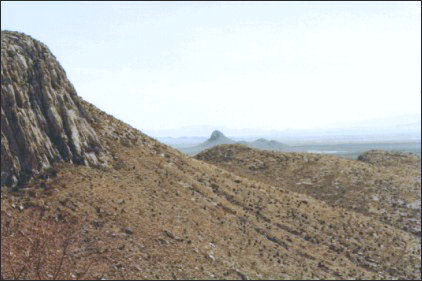

Biogeography is the science that studies the geographic distribution of organisms—especially of the factors that have resulted in past and present-day distributions. In other words, why plants and animals are distributed the way they are and what this tells us about the past.
The Chihuahuan Desert is a great place to study biogeography. The region is a mosaic of distribution patterns, thanks both to climatic history and topography. Different patterns among the low-lying desert basins and between them and the intervening mountain ranges speak to vast changes in climate and perhaps even in the landscape itself.
But the biogeographer also has be a biologist—to understand, for
example, why some geographic elements have been highways for some plants and animals,
but barriers to others. Whether a feature is a corridor or a stop signal depends on the
biology of the organism. The Texas Antelope Squirrel ranges happily in the rocky
mountain ranges east of the Rio Grande, but stops abruptly at the valley's edge.
Its highway runs north and south, but the way west is barred.

Contributor: Arthur H. Harris, Laboratory for Environmental Biology, Centennial Museum, University of Texas at El Paso.
Desert Diary is a joint production of the Centennial Museum and KTEP National Public Radio at the University of Texas at El Paso.

The varied topography of the Chihuahuan Desert offers ample opportunity for isolation. This view is from the Alamo Hueco Mountains looking southwest across the southern Playas Valley toward the San Luis and Animas mountains of Mexico and New Mexico in the far distance. Photograph by A.H. Harris.